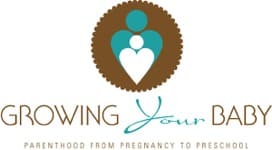For decades, the first hours after birth have been treated as medically delicate, especially for babies born too soon. When a baby arrives very preterm (before 32 weeks), the response in many hospitals is fast and familiar: clamp the cord, whisk them into an incubator, and begin life-saving interventions.
But in recent years, a quieter revolution has begun to take shape. One that centers not just on machines, but on parents.
It’s called immediate skin-to-skin contact (SSC), and it’s gaining ground for a reason. A new Norwegian clinical trial published in JAMA Network Open adds important insight into what happens when preterm babies are held against their parent’s chest right after birth—before the NICU, before the wires, and before the separation.
The result? While the study didn’t find a change in developmental test scores at age three, it did uncover something arguably more meaningful: stronger breastfeeding rates, longer breastfeeding duration, and a reaffirmation that those first cuddles matter in ways we’re still learning to measure.
The clinical trial followed 108 very preterm babies born between 28 and 32 weeks gestation. These babies were all medically stable enough to avoid intensive respiratory support in the delivery room. After birth, they were randomly assigned to one of two groups:
- SSC group: Babies were placed on their parent’s chest for two uninterrupted hours of skin-to-skin contact before being taken to the neonatal unit.
- Standard care group: Babies were transferred to the NICU in an incubator, as is common practice in many hospitals.
The researchers followed up with families for up to three years, tracking everything from medical history and feeding habits to motor skills and language development.
The Key Takeaways:
While cognitive scores didn’t differ significantly between the two groups by age three, one result stood out:
- More babies in the SSC group were breastfeeding at discharge.
84% of SSC babies were still nursing when they left the hospital, compared to just 67% in the standard care group. - They also breastfed longer.
At 12 months, 44% of SSC babies were still receiving breast milk, compared to only 26% in the standard care group. - Exclusive breastfeeding was higher, too.
Half of the SSC babies were exclusively breastfed for six months—more than double the number in the incubator group.
This is big. For preterm infants, breast milk isn’t just a nutritional gold standard—it’s protective. It reduces infections, supports gut development, and even lowers the risk of life-threatening complications like necrotizing enterocolitis (NEC).
The benefits of early skin-to-skin go well beyond feeding.
It supports emotional bonding.
That first moment of closeness after birth can be deeply grounding for new parents—especially in the stressful, often overwhelming NICU environment. Skin-to-skin contact has been shown in other studies to reduce maternal stress and anxiety, and help parents feel more involved in their baby’s care.
It helps regulate baby’s body.
Even in preemies, skin-to-skin contact has been linked to better regulation of temperature, heart rate, and breathing. Several earlier studies have shown that SSC helps stabilize these systems more effectively than incubators, especially in the first hours.
It sets the tone for family-centered care.
For decades, neonatal medicine was built around separation. But that’s changing. More NICUs now embrace models that welcome parents as part of the care team. Immediate SSC fits right into this shift, showing families they belong at their baby’s bedside from the very beginning.
What the Study Didn’t Show (And Why That Still Matters)
The researchers were clear: two hours of immediate SSC didn’t significantly improve developmental outcomes at age 2–3. But that’s not the same as saying it doesn’t matter.
In fact, the study authors emphasized that their results shouldn’t discourage hospitals from offering SSC. If anything, the findings make the case for offering it more widely—because of how safe, feasible, and impactful it is in other ways.
And here’s the kicker: when it comes to very preterm babies in high-resource settings, where survival rates are already high and NICU care is strong, it’s often harder for a single intervention like SSC to shift big outcomes like motor function or IQ. But that doesn’t mean it’s not making a difference.
This study only included preterm babies who were medically stable right after birth. Babies who needed to be intubated, required high levels of oxygen, or had major health complications weren’t included.
But even for more medically fragile infants, skin-to-skin contact can usually begin later—sometimes just hours or days after birth. Many NICUs now offer SSC as soon as it’s safe, even for babies on ventilators.
So if you’re a parent in the NICU, don’t hesitate to ask your care team; When can I hold my baby?
Can we try skin-to-skin today?
Why This Matters for Hospitals and Policy
Perhaps the most important message from this study is that SSC is doable, even in very early births. It doesn’t require expensive equipment, long training, or a specialized team. What it does require is a commitment to keeping families close and recognizing the importance of those first moments.
Given the proven benefits for breastfeeding, bonding, and emotional well-being, hospitals have good reason to make this a part of routine preterm care whenever possible.
Even if it doesn’t change a test score.
Behind every baby in this study is a family navigating the NICU journey—many for the first time, often with fear and uncertainty.
For these families, being able to hold their baby within minutes of birth wasn’t just comforting—it was empowering.
It offered a sense of control during a time when so much feels out of their hands.
It reminded them that their baby wasn’t just a patient—but a person, already responding to their presence, warmth, and voice.
And sometimes, that emotional connection can be the most powerful medicine of all.
If you’re expecting a preterm baby or currently navigating the NICU:
- Advocate for closeness. Ask your care team about SSC as early and as often as it’s safe.
- Be gentle with yourself. If SSC wasn’t possible right away, know that bonding and breastfeeding can still thrive later on.
- Celebrate the small wins. Every cuddle, every feed, every calm moment matters.
This study may not have shown a leap in developmental scores, but it did spotlight something just as important: that small shifts in how we care for preterm babies—from the very first moments—can create ripples that touch feeding, connection, and confidence for families.
Immediate skin-to-skin contact is safe, simple, and healing. And even though its biggest impacts might not always show up on paper, they can show up in the hearts—and the homes—of the families who experience it.







